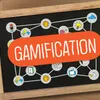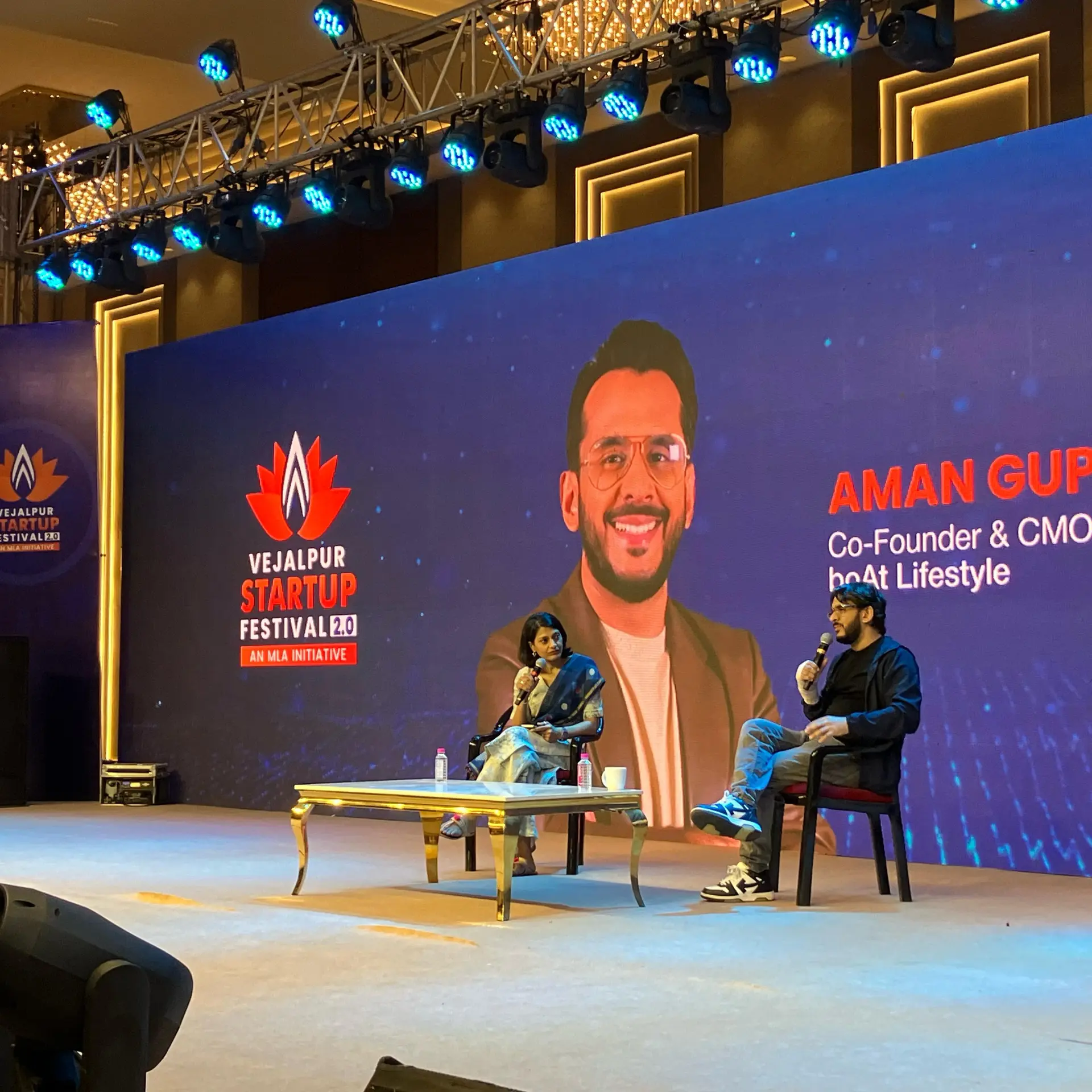Foundations and frontiers: how knowledge management improves organisational learning and business excellence
Four speakers at the Bangalore K-Community meetup share insights on how to enhance knowledge sharing and extend community networks.
The Bangalore K-Community is a group of professionals in knowledge management (KM) who meet regularly to discuss case studies, advances, and trends in the field. See my takeaways from the earlier meetup on Knowledge Management and Work From Home (WFH).
The recent meetup on Case Studies and Author Insights featured Shilpa Sharma, KM Lead for the India Technology Centre at Unisys; Pavan Soni, author of ‘Design Your Thinking’; Manoj Kumar Lal, author of ‘Knowledge Driven Development’; and Rudolph D'Souza, CKO, Afcons Infrastructure.
The virtual event was hosted by Dr Molly Chaudhuri, Director at Manel Srinivas Nayak Institute of Management. As a moderator, here are my take clusters of takeaways from the wide-ranging and informative discussions.
See also YourStory’s 15-part article series as media partner for CII’s Global Knowledge Summit: Knowledge Leadership, KM in the Age of AI, Gamification, Storytelling, Knowledge Sharing in the COVID-19 Era, and Eye on AI.
YourStory moderated the summit panel on Knowledge Excellence: Winners of the Global MIKE Awards, and published profiles of the Most Innovative Knowledge Enterprise (MIKE) award winners: EY, Tata Steel, Cognizant Technology Solutions, Afcons Infrastructure, Petroleum Development Oman, BINUS University (Indonesia), and Mobarakeh Steel Company (Iran).
KM at Unisys
An in-depth case study of KM at Unisys was presented by Shilpa Sharma, Innovation and KM Leader for the India Technology Centre at Unisys. Its KM initiative is focused on acquisition, retention and propagation of knowledge, using a case-based approach. KM is driven by the core team and a network of KM champions, with tools and technology as enablers.
Over the years, the scope expanded from knowledge sharing to innovation and thought leadership. Subject matter expertise was systematically built, and some communities of practice expanded their base from internal to external users as well. Quarterly progress reviews tracked reuse of the knowledge repository.
Specific impacts included acceleration of enterprise learning and innovation, continuous learning, and business wins. For example, Shilpa showed how innovation was boosted through new ideas, product roadmaps, white papers, and patents (see full case study here).
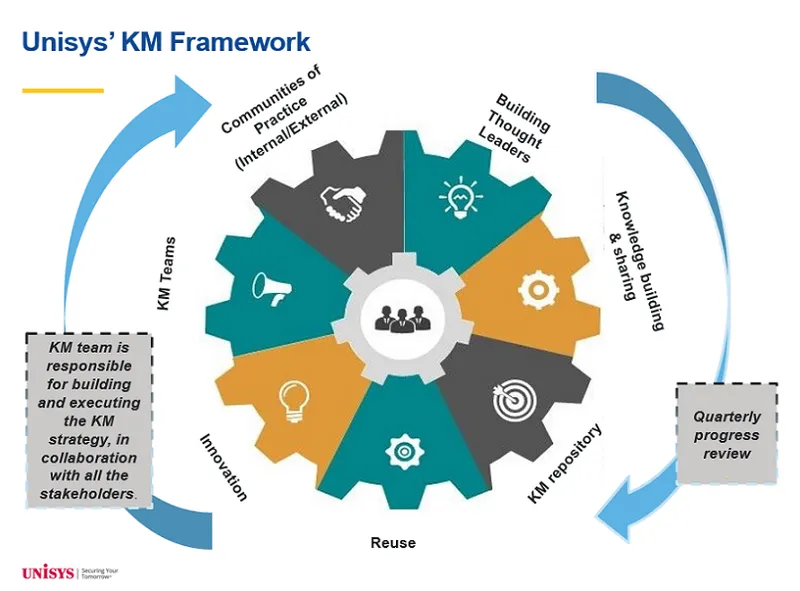
KM at Unisys (image credit: Unisys)
Thought leadership was showcased in external forums and campus connects. Structured knowledge improved project execution, and lessons learned enhanced business processes and employee induction.
Next steps for the Unisys KM team include deepening partnerships with the broader industry and academia via idea and learning platforms, Shilpa explained. The human-centered knowledge platform is key in this regard, with user-friendly design, organic flows of knowledge, activity streams, and commenting features.
“Define what KM means to your organisation. Establish the need, engage leaders, and get their buy-in,” Shilpa advised those starting their KM journeys. Role clarity and iterative steps help in the process.
Design thinking and KM
Parallels and differences between the disciplines of design thinking (DT) and KM were shared by Dr Pavan Soni, author of Design your Thinking: The Mindsets, Toolsets and Skillsets for Creative Problem-Solving (see my book review here).
Both DT and KM have a strong focus on knowledge and insights; DT builds on empathy and customer knowledge. Both disciplines make knowledge explicit – externalisation is a core part of KM, and the use of visualisation, drawings and stories is an integral method in DT.
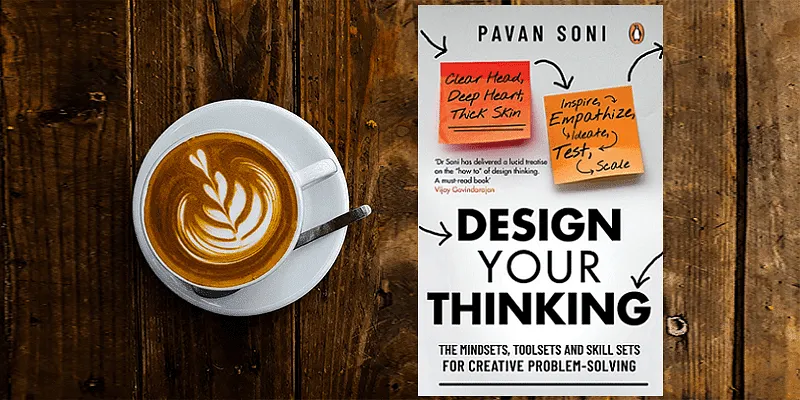
However, while KM looks to narrow knowledge down to a best practice, DT has a more expansive and divergent view, Pavan explained. While the aim of KM is to reduce variance in knowledge, DT looks at the outliers in the bell curve, and not the average.
“Today’s outliers become tomorrow’s mean,” Pavan evocatively described.
DT embraces uncertainty and builds on iterative prototyping. While KM looks to deepen expertise, DT looks for T-shaped skills that can combine depth with breadth and connections to other disciplines, Pavan added.
In fact, prior expertise can actually come in the way of overturning earlier assumptions and embracing fresh insights that DT calls for. Too much expertise can make one blind to shifts in environments, he cautioned.
In the long run, the discipline of DT is acquiring increasing importance due to the blurring of the boundaries between products and services, and the rise of experiences. “Problems are becoming more complex,” Pavan observed. The discipline of DT can bring more empathy to organisational culture and knowledge sharing practices.
Knowledge structuring
It is important to understand how knowledge is structured in organisations, advised Manoj Kumar Lal, senior business analyst at TCS and author of Knowledge Driven Development.
He explained the nascent framework of Knowledge Driven Development (KDD), which classifies knowledge into three types: domain, enterprise, and project knowledge. This knowledge can be structured in building blocks and relationships based on graph theory.
“Project knowledge after the delivery of the project goes back to the enterprise knowledge. This is how an organisation keeps its knowledge in a continuously updated state,” Manoj said. This knowledge can then be reused for the next project, thus enabling continuous improvement.
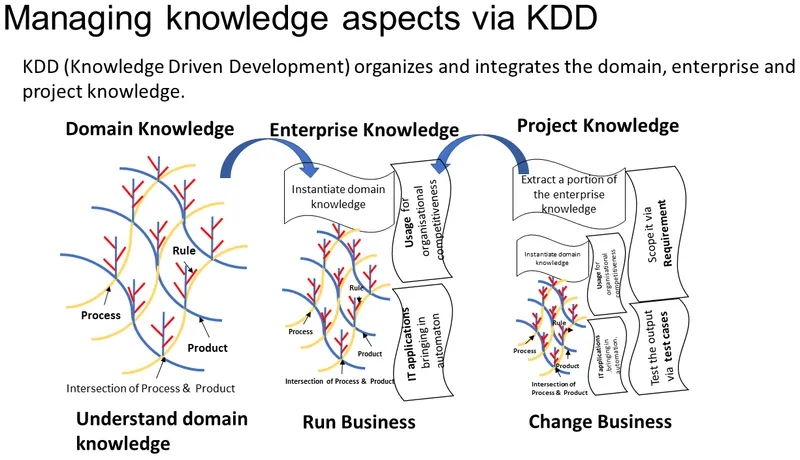
Image credit: Manoj Kumar Lal
Domain knowledge includes rules connecting processes to business offerings. Additional building blocks are knowledge usage (in the form of data, communication, reports) and IT application (eg. automation), Manoj explained. Other knowledge dimensions are project requirements and test cases.
Projects are ways of keeping enterprise knowledge fresh and relevant, Manoj observed. KDD can be used in project delivery, and to combine domain knowledge with software engineering knowledge. Some colleges have added KDD to the syllabus for problem space understanding in software engineering.
The road ahead
Forums like the Bangalore K-Community continue to connect local and global flavours of the knowledge movement. At an international level, the KM Global Network was formed by KM associations in 12 countries as a platform to promote and strengthen the discipline,
“KMGN helps member organisations share resources and collaborate across borders and disciplines,” said Rudolph D'Souza, CKO, Afcons Infrastructure. He was the head of KMGN for two years, before handing over to Vadim Shiryaev of GLINK Russia in 2021.
Future sessions of the Bangalore K-Community will feature case studies of KM at Hinduja Global Solutions (HGS), principles of global virtual collaboration, and how to extract lessons from mistakes and failures.
Edited by Megha Reddy




